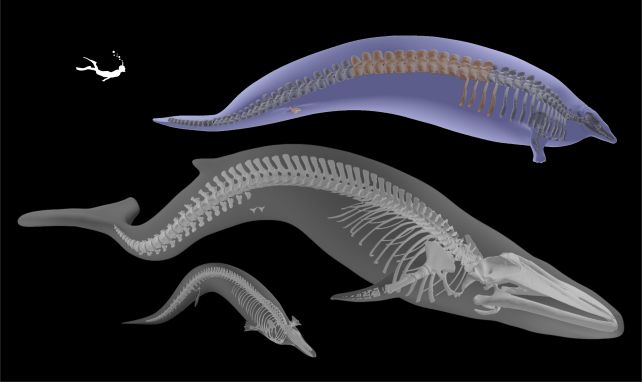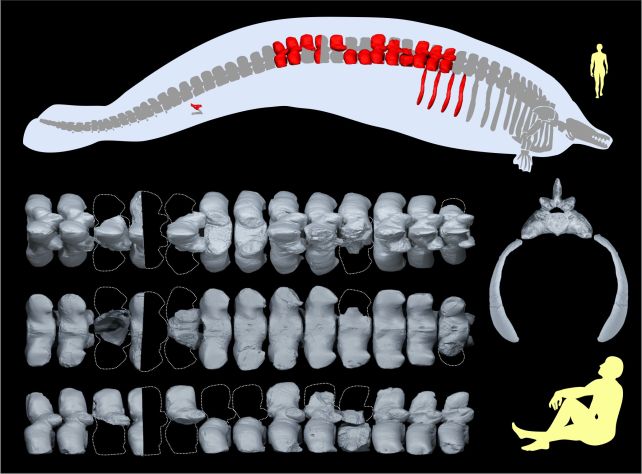The bones of a whale that lived 39 million years ago are seriously testing what we thought was possible for the size of vertebrates.
The blue whale (Balaenoptera musculus) has long been considered the heaviest animal ever to have lived on Earth. But the newly discovered Perucetus colossus could leave it in the dust.
Measurements of its bones suggest that its skeleton could have weighed two to three times that of the blue whale's.

"We use the skeletal fraction to estimate the body mass of P. colossus, which proves to be a contender for the title of heaviest animal on record," write a team led by paleontologist Giovanni Bianucci of the University of Pisa in Italy.
"Cetacean peak body mass had already been reached around 30 million years before previously assumed, in a coastal context in which primary productivity was particularly high."

Scientists have wondered for a long time what limits the sizes and masses to which vertebrates can grow. In the ocean, there's a little more wiggle room, with buoyancy counteracting the effects of gravity that place higher stress on the bodies of land animals.
And for cetaceans – marine mammals such as whales and dolphins – there's a benefit to being larger: it helps prevent core heat loss in water, which has high thermal conductivity to air.
However, a recent study found that even for filter feeding whales, like blue whales, there's an upper size limit. The low metabolic cost of such a feeding strategy allows the whales to coast with a minimum of energy expenditure – but it's limited by prey availability.
So P. colossus might be a little difficult to get our heads around, given that all our previous studies of maximum size have been based on smaller animals.

Its size has been estimated from a number of bones recovered from Southern Peru: 13 vertebrae, four ribs, and part of a hip bone, belonging to a group of the first fully aquatic cetaceans known as the basilosaurids. A close study suggests that the specimen wasn't quite fully grown.
Based on a comparison with known whales, Bianucci and his team calculated the size of P. colossus, and estimated that its body mass was somewhere between 85 and 340 tonnes. The biggest blue whale ever measured came in at 199 tonnes.
The bones also showed a high degree of thickening and densification – features often seen in marine mammals to provide natural ballast, allowing them to have larger lungs.
The time in which P. colossus lived, in the middle of the Eocene, was a particularly rich one for the sort of food that the whale may have eaten, which would have allowed it to grow so large. The researchers believe that the whale was relatively slow, preferred coastal habitats, and lived near the seafloor in shallow waters.
Changes in the ecology of the ocean then would have seen the subsequent decline of P. colossus.
"This new record supports the hypothesis that basilosaurids hyperspecialized to coastal habitats during the end of the Eocene," the researchers write, "and that the subsequent major drop in the productivity of these environments may have preferentially impacted these whales, giving way for their relatives (the ancestors of present whales and dolphins) that invaded more offshore habitats."
The research has been published in Nature.
